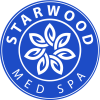Are you considering laser skin resurfacing to make your skin look smoother, brighter, and more youthful? Laser skin resurfacing can help you get these results. Continue reading to learn how laser skin resurfacing works so you can decide if this cosmetic treatment is right for you.
What is Laser Skin Resurfacing?
Laser skin resurfacing is a cosmetic procedure that helps rejuvenate and improve the texture and appearance of skin. The treatment uses a specialized laser to carefully remove the outer layers of skin, allowing the body to naturally produce new, healthy skin cells. Laser skin resurfacing uses several laser technologies, including ablative, non-ablative, and fractional lasers.
How Laser Skin Resurfacing Works
Tiny targeted beams of light are directed at the skin to remove damaged outer layers and stimulate new collagen growth, resulting in smoother, firmer, and more youthful-looking skin. There are many benefits to laser skin resurfacing, including reducing the appearance of fine lines, wrinkles, acne scars, and age spots. Unlike traditional surgical methods, laser skin resurfacing is gentle and minimally invasive. Keep reading to learn more about what to expect with a laser skin resurfacing treatment.
Preparation before the procedure
The process begins with a medical evaluation done by your laser skin resurfacing specialist. During this time, bring up any questions or concerns you may have so you can be fully prepared for your first laser skin resurfacing treatment.
For best results, follow all pre-procedure instructions provided by your doctor. This may include avoiding certain medications, staying out of the sun, and using a specific skin care regimen in the weeks leading up to your appointment.
Procedure steps
During a laser skin resurfacing procedure, a specialized laser is used to remove the outer layer of your skin, leaving behind a smoother, more youthful surface. The procedure includes the following steps:
1. Anesthesia and numbing – local anesthesia or numbing cream is applied to the treatment area to minimize discomfort.
2. Laser application – a laser device delivers precise beams to stimulate collagen production.
3. Targeting specific skin layers – the depth of the laser is adjusted to give each patient their desired results.
4. Controlled removal of damaged skin – the laser gets rid of the skin’s outer layers, which improves the texture and elasticity of your skin.
You may feel some slight discomfort during the procedure and you will need to schedule some downtime after each treatment.
Mechanisms of action
There are three types of lasers used in laser skin resurfacing. The first type is ablative lasers, which uses heat to remove the outer layers of skin to stimulate collagen production and help the tissues firm up. Next are non-ablative lasers, which stimulate collagen production and target more specific skin imperfections without damaging the outer layers of skin. Lastly, fractional lasers are for smaller, more controlled treatments on the skin to enhance the body’s natural healing abilities.
Potential side effects and risks
Common side effects of laser skin resurfacing include redness, swelling, bruising, itching, scarring, and skin discoloration. Follow your doctor’s instructions carefully both before and after your procedure to minimize these risks.
Benefits and Expected Results
Laser skin resurfacing can give you these types of results for several months:
- better skin texture and elasticity
- a more even skin tone
- less noticeable fine lines and wrinkles
- reduction in visible acne scars and age spots
- a boost in collagen production
Post-Treatment Care and Recovery
After undergoing laser skin resurfacing, it’s important to take the necessary steps for post-treatment care and recovery. To ensure optimal healing during the weeks immediately after the procedure, follow the aftercare instructions provided by your doctor or skin care specialist with exactness. Their instructions will most likely include avoiding direct sunlight, staying hydrated, and using specific skincare products to soothe the treated area.
Who is a Suitable Candidate for Laser Skin Resurfacing?
Generally speaking, individuals who have healthy skin and no active skin infections (or skin cancer) but may have significant facial lines and wrinkles, sun damage, acne scars, or uneven pigmentation are good candidates. Remember that laser skin resurfacing may not be suitable for everyone. Individual factors such as skin type, medical history, and current medications will be considered before starting a laser skin resurfacing treatment plan.
To summarize, laser skin resurfacing can help improve the overall appearance of your skin and assist in collagen production. Laser skin resurfacing is highly effective at treating everything from acne scars to wrinkles, with impressive results. Thanks to the innovative ablative, non-ablative and fractional lasers used, doctors can tailor treatments to fit your needs. Don’t wait, schedule a laser skin resurfacing consultation at Starwood Med Spa today and give yourself the gift of youthful, rejuvenated skin.

